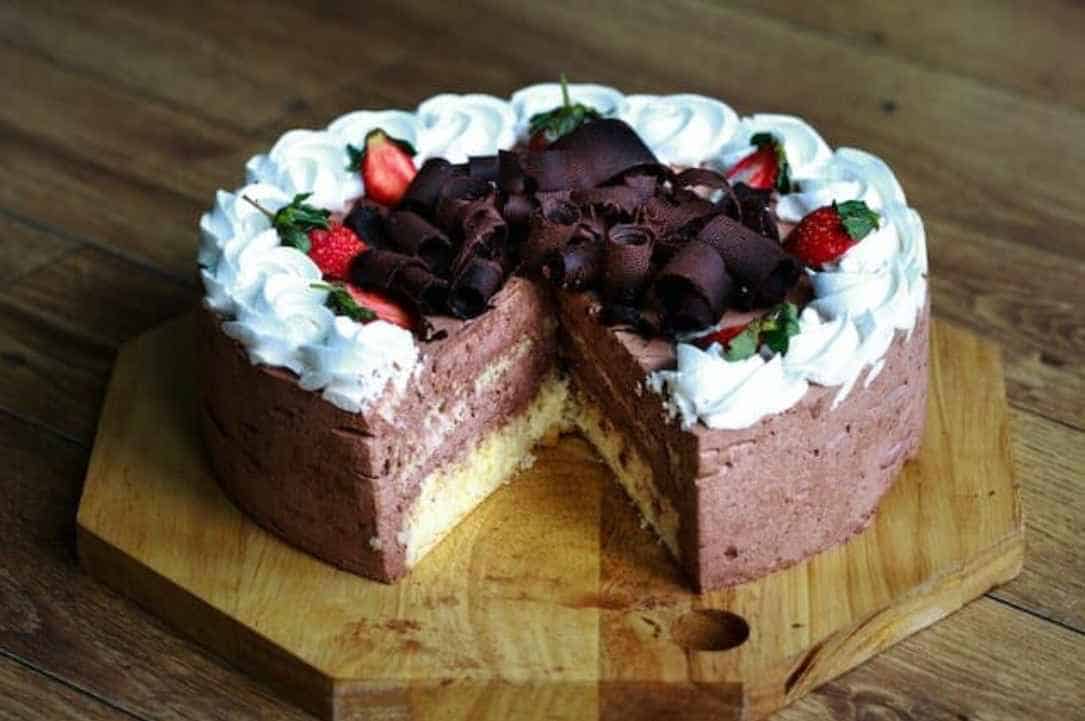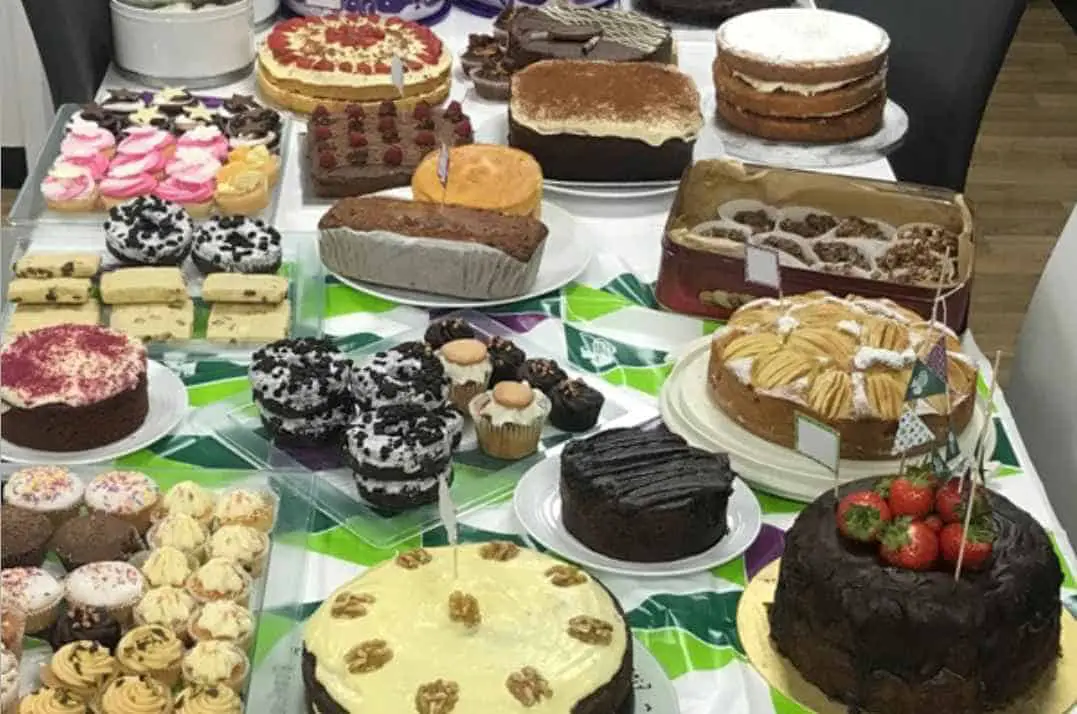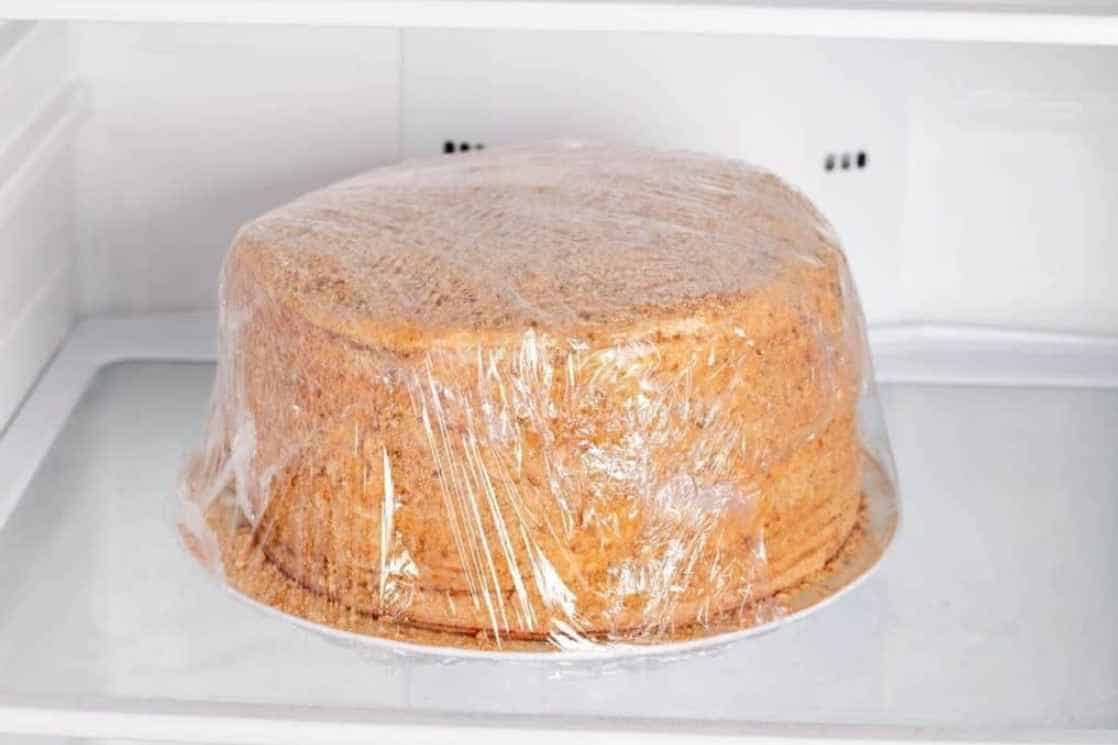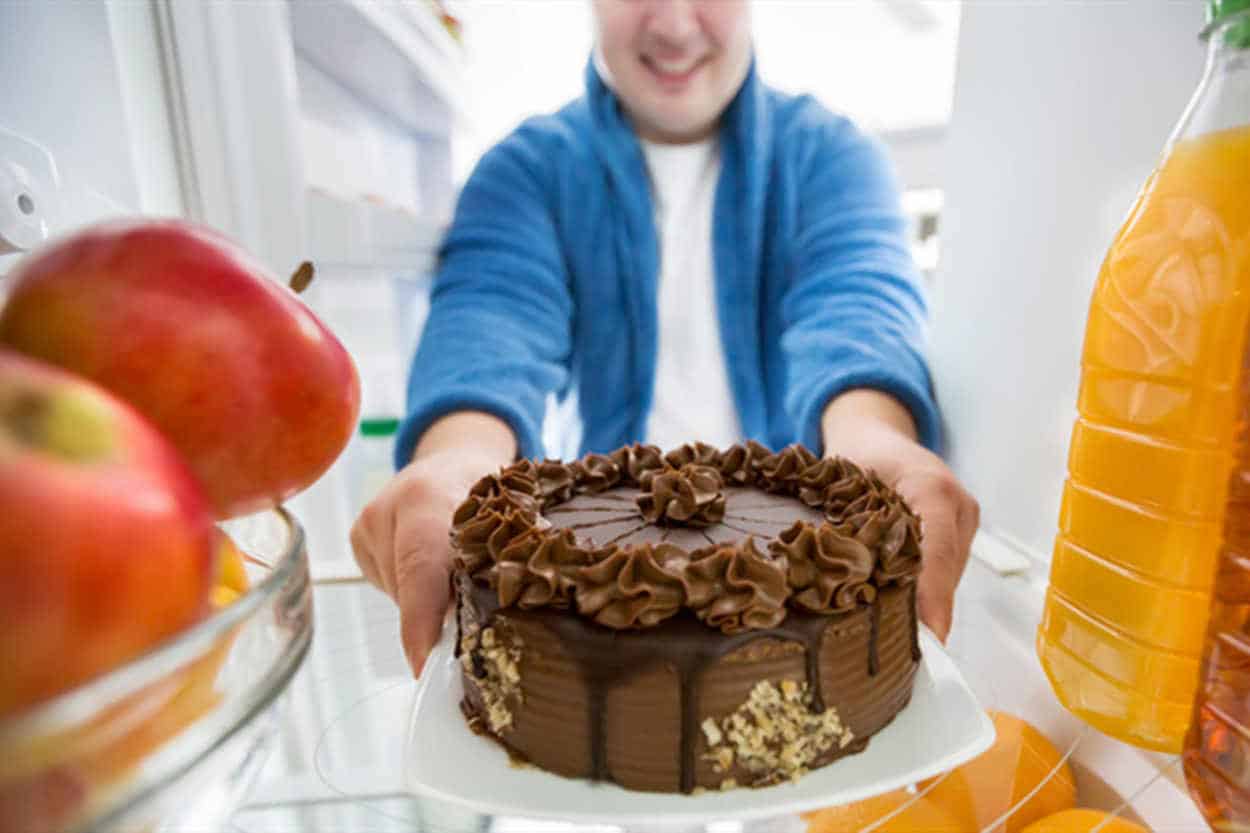Every after a special occasion that features a cake or cakes like a birthday celebration or the holidays, there’s always a possibility of having leftover cakes.
Therefore, it’s always useful to know the answer every time you encounter the question, ‘how long does cake last in the fridge?’ You can also find this handy whenever you want to keep cakes in the fridge.
Cakes in The Fridge
Cakes are one of the most common desserts, and different types require different ingredients and even some with different processes. These elements all contribute to a cake’s shelf life. Of course, shelf life also includes how you take care of the cake.
| Cake Type | Room Temp. Shelf Life | Fridge Shelf Life |
| Plain cake | 3 days | 7 days |
| Cake with fruits | 2 days | 4 days |
| Cheesecake | 6 hours | 3-4 days |
| Cakes with cream cheese frosting | 2 hours | 5-6 days |
| Cake with buttercream filling or frosting | 5 days | 5-7 days |
What’s in a Cake?

Like any other food and beverage, there are basic things you need to consider when it comes to storage. In storing the cake in the fridge, you also need to take note of the key elements to know the right approach depending on the cake.
Ingredients (essential for storage life)
One of the main things you should know about cakes is the ingredients. The basic ingredients of a cake include flour, egg, fat, sugar, salt, milk or water, and a leavening agent.
While these are the things you would usually see, cakes are diverse and specific types require additional ingredients. Some cakes are even oversimplified, meaning some ingredients do not require half of the basic ingredients mentioned.
The batter, as a whole, determines a cake’s shelf life. Dairy is one of the ingredients that spoil more quickly. You can also encounter a cake that spoils quicker if an ingredient turns out to be spoiled or on the brink of spoilage.
Processes
Cake quality also draws from how well you carry out the processes. Baking is precise; unlike other manners of making food, baking is one of the most systematic and carefully made.
And this means that failing to do a step the way it should affect the result. For example, some cakes require sifting and folding, while some do not. Missing a step can alter the quality of the cake.
Icing/Frosting
Frosting and icing also affect the cake’s shelf life. Some frostings are dairy free, but even so, it still contributes to shorter shelf life.
Types of Cakes and Things to Remember

Plain Cakes
Plain cakes are usually pretty easy to handle as the cake itself is not an urgent perishable item. Plain cakes can last for days without icing or fruits, even when stored at room temperature. It’s important to keep unfrosted cakes moist by storing them in airtight containers or plastic wrap.
This is especially true if you want to keep them fresh for longer. In case you would need to store it for longer, you can try the freezing method. You can extend the shelf life of a baked cake by wrapping them neatly and placing the layers in the freezer.
Cakes with fruits
Fruits are extremely perishable, increasing when combined with frostings like whipped cream or cream cheese. You can normally keep these types of cakes for around four days.
Cheesecakes
Cheesecake provides the ideal environment for the growth of bacteria. It has high moisture levels and a high proportion of perishable ingredients, which are the basic contributors to spoilage.
Cream Cheese Frosting
Cream cheese is one of the tastiest types of frosting and cake ingredients, as it can also be mixed in the batter. It’s also delicate and highly perishable, so cakes with this frosting are more likely to spoil quicker.
Buttercream Frosting
Buttercream frosting is also one of the most common frostings in the pastry world. It’s creamy, sweet, and buttery, perfect for cakes. These cakes need to be properly covered for storage, whether at room temperature or in the fridge. These cakes can also be frozen.
Fondant Cakes
Fondant icing has a different texture compared to other types of icing. It has a bit of a bite to it; it’s solid and has pretty good coverage when formed. To ensure its longevity in storage, you should cover it to prevent dust accumulation. This frosting can be frozen just as well as buttercream.
Cake Storage Rules
Rule 1: Wrap properly!
One of the basic things in storing cake is wrapping it. Cakes tend to get increasingly dry over time, — particularly if they are kept in the fridge after baking.
The purpose of wrapping the cake appropriately is heavy on keeping moisture in and, of course, keeping it safe from dust or other elements that may spoil it faster. Keeping the cake well-protected will assist in slowing down that process and will be helpful.
Rule 2: Fridge is best
One of the primary things to do to preserve cake freshness is temperature control. The best step is to put the cake in the refrigerator, particularly if it includes filling or frosting.
Rule 3: Temperature
There are only two acceptable temperature conditions when it comes to cake: room temperature and cool. If a room is warmer than room temperature, it is best to put the cake inside the fridge.
Rule 4: Freezing
Cakes can be safely stored in the freezer for up to four months. Before placing the cake in the freezer, you must cover each layer individually.
Store the frosting in an airtight container to keep it fresh while frozen. However, if the cake is already covered or has frosting in any way, make sure that you wrap or place it in an airtight container.
Has My Cake Gone Bad?
Nobody wants to eat a spoiled cake. Not only is it unhealthy, but it’s also very unpleasant. Spoiled cakes are not good for the palate as much as it’s not good for the body.
It might be obvious when your cake has gone bad, but here are some things you need to remember when figuring out if it has gone bad.
Smell
The smell of food is one of the most obvious things when it comes to telling whether it’s spoiled or not. When you open or prepare your cake, try to see if it’s not smelling the best. Perhaps it’s not as fresh as it usually smells, then there might be something wrong with it.
Appearance
The next thing you need to look at is the cake’s appearance. Check to determine if there is any evidence of mold. Do not consume it if at all possible.
And by that, you should not consume any part of the cake, even the parts that do not have a visible moldy appearance. You might not see it but its effects extend beyond the visible elements.
Lack of Moisture
One of the things you watch out for when storing cakes is keeping them from drying out. And so, you should look for signs of drying out.
The cake may exhibit a crumbly appearance. You can also feel it when touched; if the cake is not as bouncy as it was and is harder instead, you need to throw it out.
Tips and Tricks for Storing Cakes

Tip 1
For better security in wrapping cakes, use airtight containers or cling wraps. Make sure that this container is dry and cool too. Be sure to also fully enclose any exposed ends.
Tip 2
Yes, you can place double protection in cake storage. You can wrap a layer of foil which can serve as an assurance that the cake is wrapped properly as well as temperature control material.
Tip 3
When checking for mold or signs in a suspected bad cake, you should look under the frostings too. This means checking for molds in areas that the frosting can cover is best. Perhaps there is no visible mold unless you look at it more closely.
Tip 4
If no containers or wraps are available, you can find a large bowl and flip it to serve as a protective bowl over the cake. However, sometimes, this does not provide an airtight environment for the cake, so you should find other alternatives if planning to store the cake for a longer time.
On the other hand, if you’re only planning on storing the cake for a few hours or just a day or two, an overturned bowl as a container or wrap would be okay!
Tip 5
If you are preparing for a future event or celebration and plan to freeze the cake, you should have a tester. This sampler will help you determine how it will taste after being frozen and refrigerated. This is a great way to avoid wasting a layer of cake.
Summary
So, how long does cake last in the fridge? There’s no exact answer. However, one thing is sure; it should be no more than a week! While your cake could still be okay after seven days, it would not be as fresh as it is. You should still check on it by examining it.
